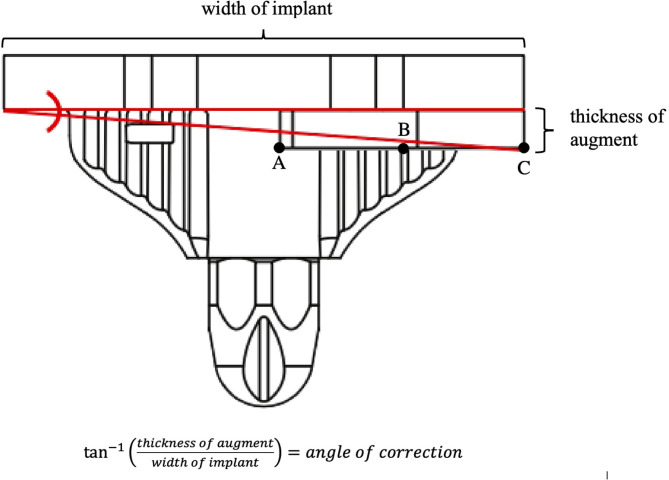Figure 2.
The inverse tangent of the augment's thickness over the implant's width can be used to approximate the angular correction given by apposing the component with a unilateral augment to a uniformly flat bone surface. In a purely mathematical sense, the augment would first contact a flat surface at point A. However, from a practical point of view, because of the use of cement and partial impaction in cancellous bone, using point A to calculate the angular correction would overestimate the correction. Thus point B, in the middle of the augment, was assumed to be where a flat plane would intersect the augment. The length of the segment BC was subtracted from the width of the implant in the calculations.

